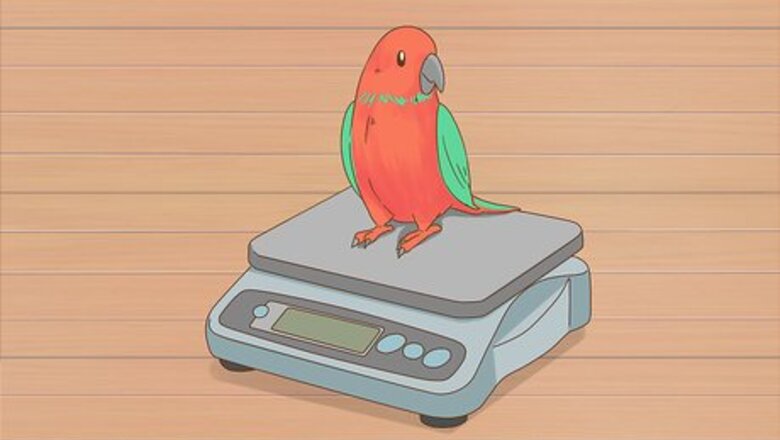
views
Monitoring Your Bird’s Diet
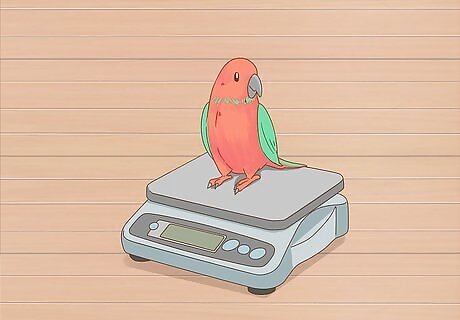
Weigh your bird daily. Weigh your bird at the same time every day so that its weight will fluctuate less due to meal times. Declining weight is a significant sign of illness. If your bird’s weight drops by 10% or more, you should immediately take your pet to the doctor. While this might seem like too much work, changes in weight are one of the earliest signs of illness, so monitoring weight is often the only way to effectively catch health problems in time for intervention. Alternatively, feel your bird’s breast bone. Its chest should be well-rounded and muscular. If you can feel the bone (the keel), your bird has lost too much weight and should be taken to the doctor immediately.

Check its droppings. Put plain paper on the bottom of the cage to make it easier to see and monitor droppings. Watch droppings for any change in frequency, color, texture, or quantity. Take your bird to the veterinarian if any change in the nature of your bird’s droppings persists for 12 hours or more. Feces naturally varies somewhat in color. However, you should watch for bright red, bright black, and bright green feces. Undigested food in the droppings or hard feces can be a sign of illness. Diarrhea is a sign of bacterial and fungal infections. The bird’s feces should have white parts called urates. If the white part is missing from the feces you should take your bird to the vet immediately. Unusually large amounts of urine can indicate an issue with digestion. Be mindful if this continues for an extended period of time. It is also a bad sign when feces is stuck to the tail feathers after your bird goes to the bathroom. Matting of the feathers in the area suggestions diarrhea.
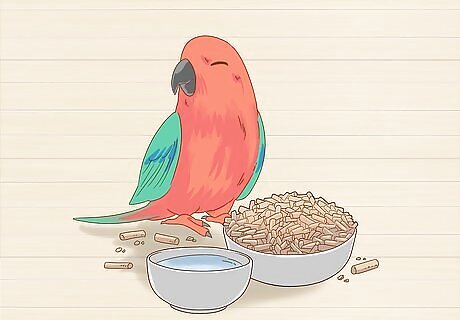
Pay attention to how much food your bird eats. If your bird begins to eat less, this could indicate a health issue. Monitor how much food you give you bird and how much is left after a feeding. A sick bird might try to disguise its lack of appetite by picking up food, only to drop it on the floor of the cage. Be mindful of scattered food. Be especially mindful if your bird isn’t eating its favorite food. If you believe that it is sick, test its health by feeding it a favorite treat. See how it responds.
Monitoring Your Bird’s Appearance
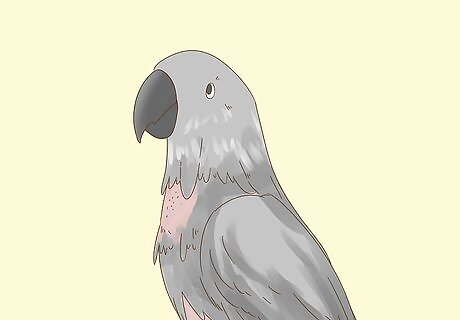
Look for unhealthy feathers. A bird’s feathers should look bright and colorful. Young birds might exhibit some issues with feather care. But mature birds should not have feathers that are torn, misshapen, or discolored. If feathers are torn up, exposing the skin underneath where it is normally hidden, your bird might well have an infection. It is common for the feathers of a sick bird to look duller in color than they otherwise would.

Watch for puffed-up feathers. Birds will often puff up their feathers to look bigger when they are cold or asleep. This behavior is normal. However, if your bird has its feathers puffed up through much of the day, something might be wrong. If it is sick, it might also bob its tail up and down as it puffs up its feathers. This could be a sign of nearly anything, birds will puff up their feathers in response to most varieties of illness. Birds puff up their feathers because they are cold. This is likely because their energy is being diverted toward fighting of illness or stress. Puffed-up feathers then, are something like the bird equivalent of a fever. They are the first sign of any illness in your flying friend.
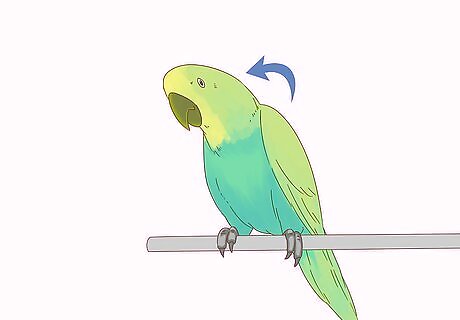
Notice its posture. A sick bird will often lean over, instead of sitting up. A healthy bird might not sit up all the way, but will at least sit up partially. Often a bird that is having difficulty sitting up because of poor health with also puff up its feathers.

Check its ears. The ears of a healthy bird should not be red or swollen. They should also not produce any liquid discharges or show signs of blockage. A bird's ears are generally not very easily visible, but can be found under its feathers on either side of its head. These symptoms can be a sign of an ear infection, like Otitis externa
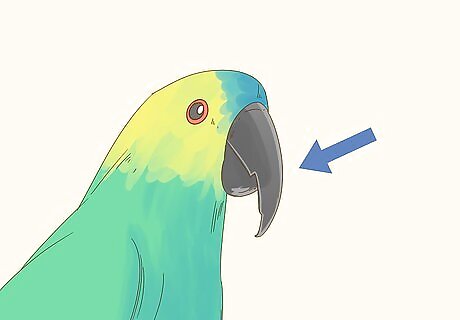
Watch for growth in the beak. A beak that grows rapidly is indicative of some sort of metabolic problem. Similarly, it is an issue if the beak is changing shape or becoming asymmetrical. The tissue inside the beak should have a light pink color.

Be attentive to normal signs of illness. Just as with humans, sneezing and vomiting are generally signs of an underlying illness. Take your bird to the vet if it exhibits these symptoms.
Monitoring Your Bird’s Behavior
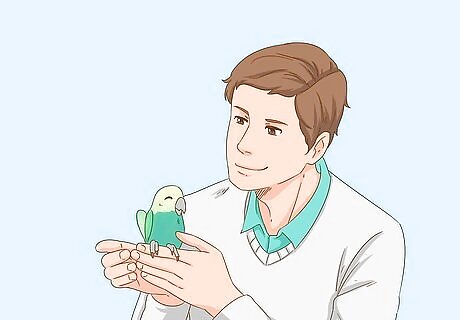
Play with your bird daily. Birds are social animals that enjoy time outside. Furthermore, one important sign of illness is lethargy. To monitor whether your bird is sick, you need to see how it responds to physical activity. If you bird seems lethargic or does not respond to stimuli, there might be an underlying issue. When you do play with your bird, make sure that it does not breath heavily afterward. Breathing should appear effortless. It should not be breathing through an open mouth, or exhibit tail bobbing when it inhales. Sometimes your bird will be lethargic because it has not gotten enough rest. If you see that it gets sleep and is still tired afterward, you should be concerned.
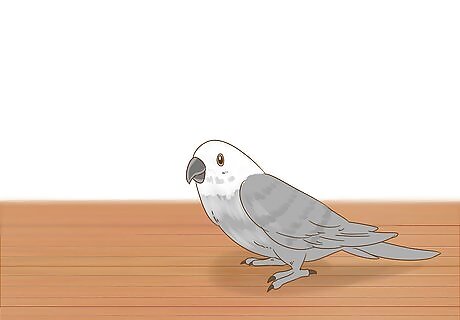
Be mindful if your bird spends a lot of time at the bottom of the cage. A bird that sits on the bottom of the cage might have balance issues. Watch to see if it seems to mostly be leaning on one of its legs to the exclusion of the other. These can be signs of injury.
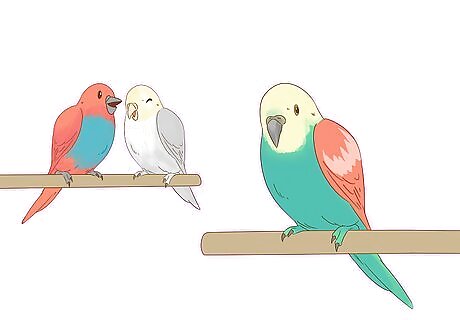
Watch for changes in personality. Any change in personality could reflect an underlying issue. Watch to see if an otherwise friendly bird no longer wants to socialize, if an active bird seems lethargic, or if a calm bird seems agitated. It is particularly common for a sick bird to become more aggressive with other birds.

Watch for increased sleepiness. One sign of dangerous lethargy is increased sleepiness. Be mindful if your bird is sleeping at unusual hours or has its eyes partially closed. How much and when a bird sleeps can vary significantly even within a species. Pet parrots, for example, have very different schedules from one household to another. However, schedules should be consistent. If your bird has begun sleeping during a time of day in which it is normally awake, that is a cause for concern.

Listen to your bird. A bird that is sick will be less likely to vocalize or sing than a bird that is healthy. If your bird isn’t as talkative as normal, be attentive to its other behavior, because something might be wrong. It is also possible that your bird’s voice might begin to sound different if it is sick.


















Comments
0 comment